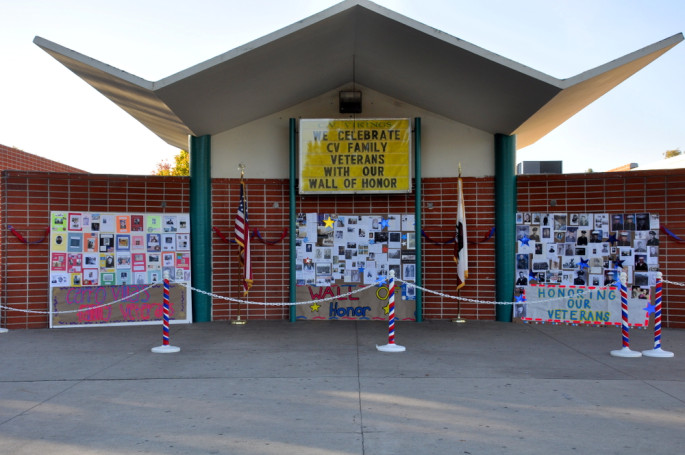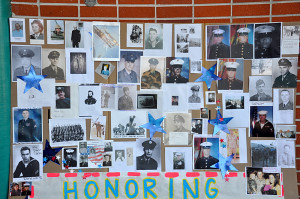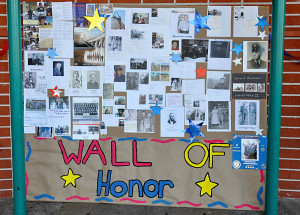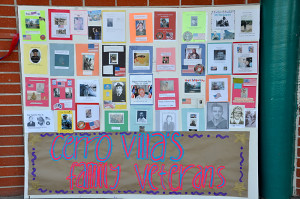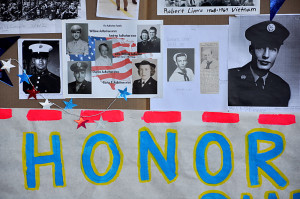Accountability
In the Opinion section of yesterday’s OC Register Aaron Smith laments the lack of substance in the emerging educational accountability standards for the state of California and its local school districts. If the instances he cites are an accurate  representative sample of those standards, I would have to agree with him that the standards don’t hit the point when we consider what we really want our children to be taught and learn in our schools.
representative sample of those standards, I would have to agree with him that the standards don’t hit the point when we consider what we really want our children to be taught and learn in our schools.
We want them to be able to read, write and “do” math. We want them to know their history and science and, through these, how our society and world function and their place in it. We want them to be able to work alone and in cooperative and competitive groups.
We want them to emerge from our families and educational institutions as hard-working and honest people of whom we can proudly say: “He is my son.” “She is my daughter.” “They were my students.”
However, our emphasis on standards (be they local or national) and testing, rules and regulations is not the answer. If our children are not learning what we want them to learn, we must fix things where the learning occurs, or is supposed to occur. And you cannot do this in the state legislature or in a meeting of a board of education.
The first place learning occurs is in the home. Neither educational institutions nor individual teachers have any control of the educational process at home.
A well-educated and economically well off family with parents who both actively participate in the raising of the child (children) are going to send to school a student markedly different from that of a poor single parent working multiple jobs with only a grade school education and a limited acquaintance with the English language. There are, of course, an almost infinite number of permutations of the above situations, and schools and individual teachers are supposed to deal with them all successfully.
It just isn’t possible and isn’t going to happen in your lifetime or mine.
Students also learn out in the “real” world, away from family and school. They learn from their friends and acquaintances and their families. They learn from the people they encounter everyday: the cop on the beat (or in the patrol car), the polite (or rude) clerk at the market, the old lady walking on the sidewalk, the neighbor with the aggressive dog. They learn from television, the movies, their video games, their sports’ teams and coaches.
Schools and teachers cannot compete with all of these, and other, influences, positive and negative. All of this teaches your children more than he or she could ever learn at school.
What schools and teachers can do, however, is to help show your child how these individual interactions contribute to and shape our society as a whole. And, in the later grades how our society fits into a much wider and diverse world.
They also “give” your child the individual tools: the ability to read and write, the ability to do simple arithmetic for the needs of daily life, an introduction to the higher maths necessary for more skilled jobs and functioning of our increasingly complex society.
While learning these skills, hopefully, they also learn how to think logically and use their intuition when necessary.
We expect our schools and teachers to do all of this and more. We need to hold them accountable; we need to make sure that they are doing a good job; and, if they aren’t, we need to get rid of them and replace them with someone who will.
There is something that is usually forgotten in this discussion, however: tools and conditions.
Carpenters cannot build homes without hammers and nails (or nailguns) and saws. A good carpenter cannot build a house that will last without good dry wood.
A painter cannot paint the outside of your house during a rainstorm. The paint will not last, no matter the skill of the painter, if the paint is of low quality.
Most, if not all teachers these days, are well-educated. They have subject matter degrees and credentials that show they have been taught how to teach and have actually done so–under the supervision of an experienced teacher.
They also like kids and want those children to succeed.
Ideally, these people will succeed and our children will all learn and none of them will be left behind. But, you know as well as I do, in the real world it isn’t going to happen no matter how the deluded individual hiding and ranting from the bushes feels about it.
In education, as in many other things, demographics is, quite often, destiny. Richer areas are going to have better roads, houses and schools than are poorer areas–redistribution of wealth and tax dollars by governments notwithstanding.
Children of educated and economically well off parents are going to be better prepared for school than others.
Classrooms, books and other tools and facilities are going to be more up-to-date and in better condition in well off areas than in poor areas.
Yet, we expect our teachers to teach–successfully–all of our children, all that we want them to know, no matter the child’s background and preparedness, the condition of the facilities or the tools the teachers have.
This is laughable, or would be if it were not so tragic.
We expect each teacher to treat our child as an individual, in a class full of individuals (usually forty of them in California these days). We seem to forget that the terms individual and class are synonymous only when the class contains but a single individual.
But if the teacher fails with our child, (and, remember, in our system today neither the child nor the parent bears any fault or responsibility) we want that teacher fired.
Let’s see: thirty-nine successes and one failure in a classroom. That’s a .975 batting average. Ted Williams hit .406 only one year. Zack Greinke will get about one million dollars per start, win or lose, for the next six years. We accept high failure rates in many occupations and pay extraordinary salaries, but we expect our teachers to be perfect.
Oh, yeah, I almost forgot. In the upper grades teachers have five or six classes of forty students with the same expectations, and in physical education that can be fifty students per class.
Just think about successfully interacting with and teaching two hundred forty to three hundred teenagers per day–and none of them really want to be there. (Think about it. Did you really want to sit through your English classes learning about independent and subordinate clauses and verb-noun agreement? How about Algebra? The differences between capitalism, socialism and communism? Did you really enjoy running laps and doing jumping jacks? Well, neither do your kids.)
We give teachers all of the responsibility, all of the blame and none of the power.
Teachers cannot: force a student to study, to pay attention, to do homework, to show up to class on time, to be respectful. (A student can even tell a teacher to F-off in front of class without fear of punishment or suspension today.)
Parents? What can a teacher do about a parent(s) who does not do his or her part in preparing a child for school? Nothing, except, maybe, cuss at the phone after another useless conversation.
I believe that some (many?) parents’ attitudes are best captured by that office supply commercial of several years ago. You remember it. A parent joyfully taking two glum and frowning children on a shopping expedition for school supplies–“the most wonderful time of the year.” Glad I didn’t have either of those two kids in one of my classes and very happy about not having to deal with that parent.
But enough ranting and raving, it’s a beautiful day outside and it needs to be enjoyed.
Yes, hold teachers accountable for doing their jobs–teaching. Don’t hold them accountable for the interference and failures of society or the conditions in which they teach that they have no control over.
Supply your carpenter with good tools and good wood; you’ll get a well-built house that will last for decades.
Supply your painter with high-quality paint and your house will look good for years.
Give your teachers well-equipped and maintained classrooms; provide them with the books and other tools they need; prepare your children to be good people and good students. Then the teachers will be able to do their jobs and your children will receive an education they, and you, and all of us can be proud of.

